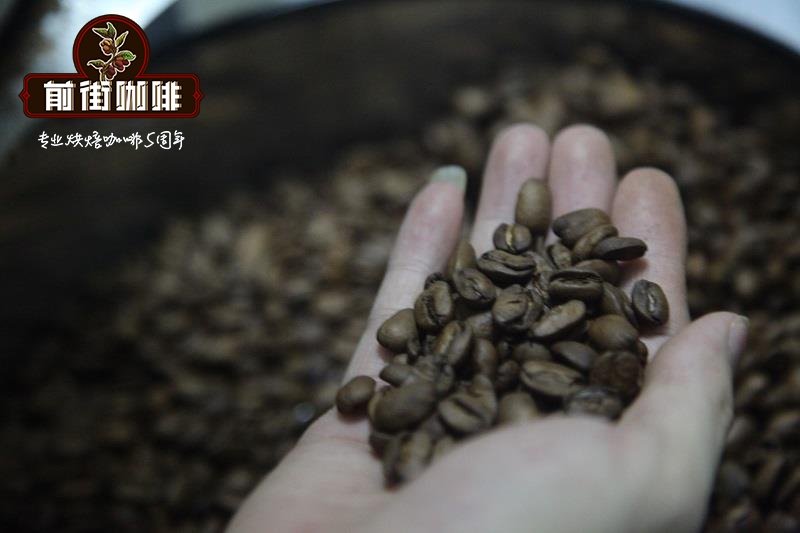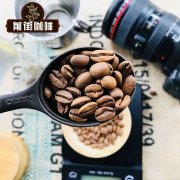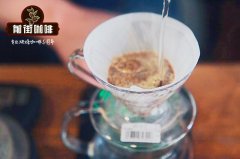How to distinguish low-caffeine coffee beans? How to bake decaf beans? Development trend of low-caffeine coffee market

Professional coffee knowledge exchange more coffee bean information please follow the coffee workshop (Wechat official account cafe_style)
With the accelerated development of the coffee market and the continuous improvement of customer requirements for quality, to improve the baking quality, especially to ensure the quality of low-caffeine coffee baked products, has become the biggest challenge faced by all coffee roasters.
According to statistics, the total consumption of decaf coffee grew faster than that of regular coffee in 2017, and in Western Europe and Canada, young consumers between the ages of 18 and 24 were the main consumers of decaf coffee. Young consumers dare to try different kinds of boutique coffee, high-quality, exquisite coffee without (low) caffeine is also the object of their pursuit.
The baking method of low-caffeine coffee beans has always been an elusive problem for bakers. Let's take a look at a few things we have to know about decaf.
01
● Q-No (low) coffee looks different?
Whether (low) caffeine coffee is raw or cooked, its appearance is very different from that of ordinary coffee, and this difference often bothers roasters, so if you want to ensure the baking quality of caffeine-free coffee, first of all, you need to be familiar with and master the appearance characteristics of caffeine-free coffee.
Decaf coffee treated with classic SwissWater ®is darker green and matte. During the roasting process, caffeine-free coffee is still darker than regular coffee. Therefore, we can not judge the roasting degree of coffee by traditional visual method, but need to judge by other methods, such as detecting internal color or surface texture.
But it should be noted that there are also pitfalls in the surface texture. Chemically treated decaffeinated coffee, such as coffee treated with ethyl acetate or dichloromethane, glows even at the very light roasting stage; water-treated caffeine coffee remains matte even at the deep roasting stage. In order to ensure the quality of caffeine-free coffee, you must understand the differences in appearance between caffeine-free coffee and ordinary coffee, so as to avoid falling into a visual trap that leads to misjudgment of the roasting degree of coffee.
02
● Q-how to judge the roasting degree of (no) decaf coffee
A-"my experience is that until the explosion, I will rely more on the electric thermocouple than on the appearance of the coffee, because the coffee is too dark at the beginning, so I will judge by the thermocouple and the sense of smell (hearing, of course. But in most cases, it is mainly smell), and calculate the ripening time of the coffee and the temperature at which the roasting ends."
In the final analysis, the appearance of coffee is far less important than the taste, so we'd better put aside the visual deviation and judge the final quality of the coffee by the cup test results, and let the taste determine everything.
03
● Q-treat your caffeine gently
A-No (low) caffeine coffee has been processed through multiple procedures before baking, so be sure to treat your caffeine coffee gently. All causal treatments include rehydration and redehydration, which will greatly change the internal structure and water retention capacity of coffee, thus affecting the roasting of coffee. In general, non-(low) coffee dehydration rate will be faster, which will greatly affect the "explosion" of coffee.
I think the most important thing is that many bakers don't know the difference in the moisture content of uncaffeinated coffee. They think that uncaffeinated coffee is the same as regular coffee. Only by knowing this can you bake caffeine coffee correctly.
No (low) coffee roasting must be gentle, do not be too anxious, otherwise the water will be lost, you need to accurately use the remaining water in the coffee.
No (low) because the treatment will change the internal structure of the coffee, so I will slow down the roasting process of the coffee and heat it slowly and evenly. We usually use a lower end-of-baking temperature to ensure the high maturity of the coffee and ensure a perfect balance between sour and sweet taste. We will slow down the heating rate quickly, but the process with less firepower must be uniform to ensure the perfect maturity of the coffee.
04
● Q-strive to improve quality
A-the most important thing-to ensure the highest quality of caffeine, so that caffeine can get more attention and love. Baking, cup testing, adjustment, and repetition are the same rules for all baristas when baking a bean. At present, all roasters launch dozens of new types of coffee every year, while there are less than 3-4 kinds of uncaffeinated coffee. We need to devote more energy to non-caffeine coffee to make more consumers feel the charm of decaf coffee.
Qianjie coffee: Guangzhou bakery, the store is small but a variety of beans, you can find a variety of unknown beans, but also provide online store services. Https://shop104210103.taobao.com
Important Notice :
前街咖啡 FrontStreet Coffee has moved to new addredd:
FrontStreet Coffee Address: 315,Donghua East Road,GuangZhou
Tel:020 38364473
- Prev

What are the brands of decaf coffee? Where can I get decaf coffee? Introduction to the characteristics of low-caffeine coffee beans
Professional coffee knowledge exchange more coffee bean information please pay attention to the coffee workshop (Wechat official account cafe_style) the so-called decaf coffee, as the name implies, is only a small amount of caffeine coffee. Coffee contains many ingredients and substances, among which caffeine has an obvious effect on the human body. For many people who are addicted to coffee but whose physical condition does not allow caffeine intake.
- Next

Can low-caffeine coffee beans be eaten? the story of the characteristics of low-caffeine coffee beans causes many defective beans.
Professional coffee knowledge exchange more coffee bean information please pay attention to the coffee workshop (Wechat official account cafe_style) ● processed low-caffeine coffee beans are often defective beans, due to the same grade raw beans as the control group, this phenomenon is obviously abnormal, after discussion, we put forward several possible hypotheses that ▼ and decaf raw beans may not be properly protected
Related
- Beginners will see the "Coffee pull flower" guide!
- What is the difference between ice blog purified milk and ordinary milk coffee?
- Why is the Philippines the largest producer of crops in Liberia?
- For coffee extraction, should the fine powder be retained?
- How does extracted espresso fill pressed powder? How much strength does it take to press the powder?
- How to make jasmine cold extract coffee? Is the jasmine + latte good?
- Will this little toy really make the coffee taste better? How does Lily Drip affect coffee extraction?
- Will the action of slapping the filter cup also affect coffee extraction?
- What's the difference between powder-to-water ratio and powder-to-liquid ratio?
- What is the Ethiopian local species? What does it have to do with Heirloom native species?

